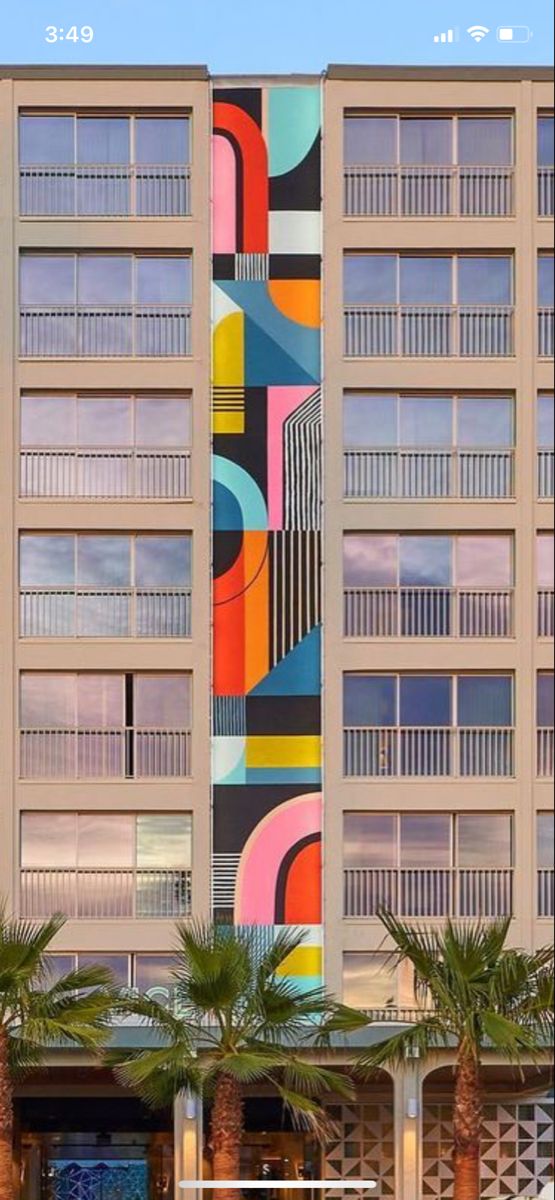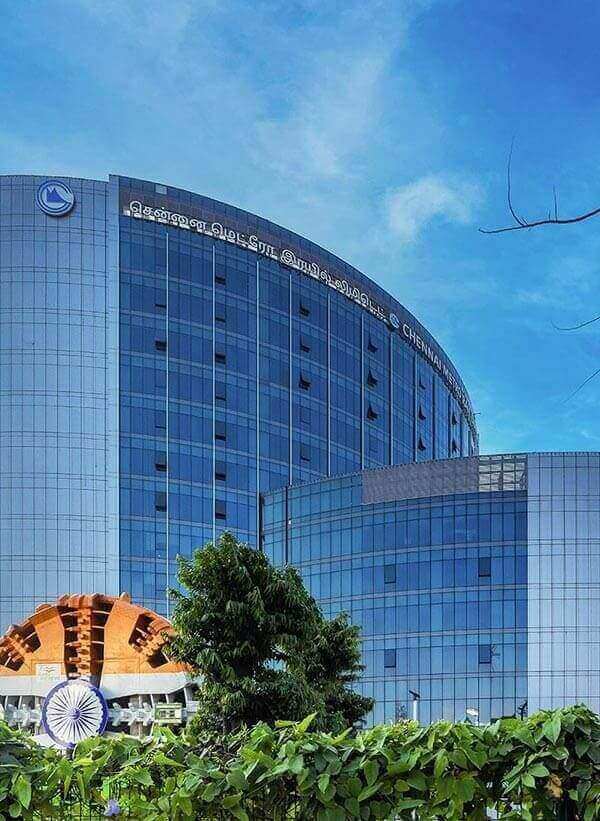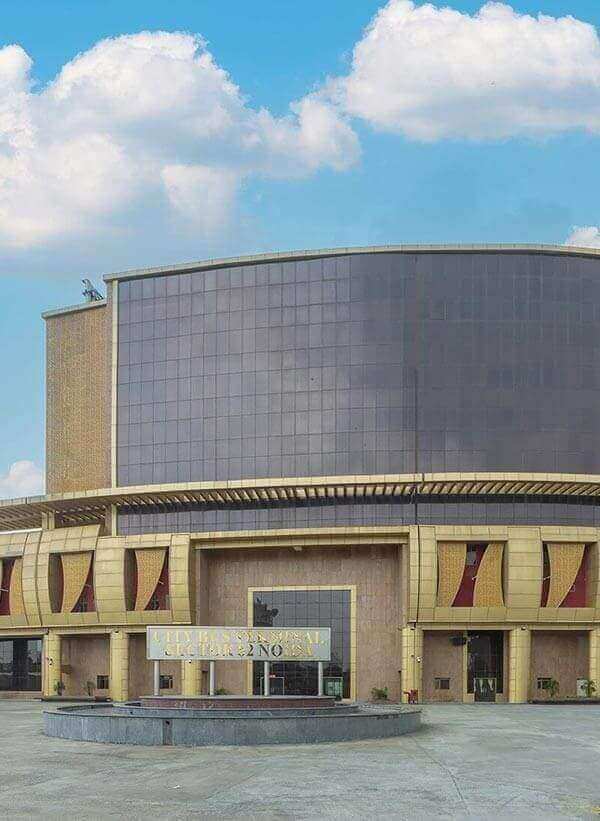ACP Facade Designing
The ACP cladding industry has evolved significantly over the past few decades. In the past, ACP sheets were only considered suitable for functional constructions and industrial buildings. Now, ACP panels are used for a wide range of construction due to their good insulating properties, versatility, quality and aesthetic appearance.
Viva’s aluminium composite panels are widely used in Exterior Architecture, Interior Decoration, Corporate Branding, Transportation and Industrial Applications.

To ensure a proper installation of ACP cladding, any project stakeholder, be it a designer, installer, or subcontractor, should review the below-recommended checklist.
01 Wind load Calculation
Due to variations in wind pressure from floor to floor, the thickness of an ACP panel depends on the height of the building. An ACP board that is not thick enough will either be pushed out of position or will deform as it cannot withstand the high pressure. For example, if a 3 mm thick ACP sheet is used for the first 3 floors, it may make sense to use a 4 mm thick ACP cladding for the top 3 floors, as wind pressure is typically higher on the top floors.
02 Dimension of the Panel
The ACP panels used in the construction must have the same height and width. If the block is a rectangle, it must be a rectangle; if it is a square, it must be a square. This means that the uniformity and synergy of each ACP board must be consistent.
03 Panel Joints
VIVA’s aluminium panel sheets can be joined to other panels or materials by using rivets designed for aluminium construction. To determine how many rivets are required to attach the ACP cladding to the structure, the corners of the ACP panel should be considered.
04 Panel Arrangement
Maintaining proper spacing between ACP sheets and filling that space with silicon is important. This is because the aluminium composite panels expand and contract in response to weather changes occurring from the outside and silicon used in between helps to maintain the shape of the and also prevents dust and rainwater from entering the space.
05 Details of the Abutment
While determining the size, thickness and spacing between the ACP sheets, it is important to consider the thermal expansion of the ACP panel, which is 2.49 mm/m/100°C. To prevent jamming or deflection of the sheet, it is also necessary to ensure that the rivet hole allows sufficient room for expansion.
06 Shade Differences
We are aware of the possibility that the building structure may expand and therefore ACP panels of the same shade are required. Hence, VIVA is known for offering its prestigious customers the unique luxury of reordering the specific shade of ACP sheets in exchange for the batch name of the previously ordered panels. The designers ought to make sure that the aluminium composite sheets are installed as per the directional arrows printed on the protective film.
Installation at Facade
Follow these tips to slay your routing and fabrication process of VIVA’s ACP sheets
For an aluminum composite sheet to achieve the desired finish, you must effectively execute its routing and fabrication during the installation process.
A Use the same arrow direction when installing ACP panels to avoid shade variation caused by surface orientation, especially when using metallic and abstract colors.
-
B VIVA’s ACP sheets expand at a rate of (2.4 mm/m/100) degrees. Therefore, it is imperative to maintain adequate distance between two ACP claddings to guarantee thermal stability.
-
C The stiffener and structure should be appropriately aligned to avoid wrinkles in the aluminum panel sheets. (Generally, 4 by 4 feet or as recommended by the architect)
-
D It is essential to consider the wind pressure of a given altitude and location.
-
E You must provide batch printing on the bottom of each ACP panel during the subsequent orders to avoid color variations at the time of part-orders.
-
F Consider the diagonal length of aluminum composite sheets when cutting or grooving to avoid a tapered finish for your panel blocks. The diagonal should not exceed 2mm.
-
G It is advisable to remove the protective film upon completion of installation. If the protective film is left on for more than 45 days, removing it will be challenging. Avoid pulling the protective film below 10°C.
-
H Do not remove the protective film with a jerk; do so smoothly and with equal pressure to prevent deflection and humps.
-
I To prevent color shade variations within a building surface, we recommend our clients order all the VIVA’S ACP panels for a similar project in one order.
-
J The panels must be weather-proof to prevent thermal movement caused by temperature fluctuations. Otherwise, the ACP panels will bow, and the fasteners will be overstressed to unacceptable levels.
-
Thermal Resistance – 50ºC ~ +80ºC
-
Linear Expansion 2.40 mm per meter at 100ºC
-
K Keep in mind that the coating integrity will be compromised if the working temperature approaches or exceeds 100ºC. Therefore, the thermal resistance of the wooden ACP sheet also influences the fabrication.
The formula to calculate the distance based on the thermal expansion of the length of sheets is:
Thermal expansion x sheet length (in meter) x Delta T (Temperature Variation)
Below is a quick reference guide for the thermal resistance of VIVA’s aluminum panel sheets:

Facade Maintenance
Simple cleaning tips for effortless maintenance of Aluminum Composite Sheets
Facades made of ACP sheets are a feast to the eyes only if they are maintained appropriately since they’re constantly exposed to dust, rainwater, and atmosphere pollution. Nonetheless, proper care can restore ACP panels to their former glory.
So, follow these steps to ensure that the lustrous look of your building’s exterior remains intact for an extended period.
-
Conduct cleaning on the shaded side of the building under moderate temperature. The freezing weather will cause the water or the diluted solution to freeze on the ACP cladding. In contrast, scorching temperatures may initiate chemical reactions and cause the water to evaporate, leaving behind soap scum or dirt marks.
-
Start by rinsing the surface with water from top to bottom and then use a soft sponge to wipe away the dirt. If this doesn’t help, then put a water spray and a sponge to test. Make sure to wipe off in a horizontal motion first, followed by a vertical movement.
-
If the dirt persists, use a diluted solution of mild soap and clean water and a non-abrasive cotton cloth like linen to wipe off the grime. To finish off, rinse with clean water to remove all remnants of the cleansing agent. Follow it up by wiping it dry with a chamois, squeegee, or lint-free cloth to avoid water stains. Considering this tip, you need to bear a few points in mind. They are –
-
Mix the mild cleaner in the 1-5% ratio with clean water to form an alkaline solution. For example, you may use 50-250ml of detergent for every 5 liters of water.
-
Conduct a patch test in a small area before applying it to the whole area. Leave it on for a minute to be convinced about the safety of the detergent.
-
Do not go overboard with cleaning or rubbing; otherwise, the surface gloss of the aluminum composite panel will be compromised.
-
Ensure that the cleaning rags or sponges are free of grit and dirt; else, the coated surface will incur scratches.
-
Use any detergent that helps you maintain a pH level of 8 in the water.
-
Avoid acid-based or bleach-based detergents to clean the ACP sheets. Never use strong organic solvents, such as MEK (Methyl Ethyl Ketone), MIBK (Methyl Isobutyl Ketone), Trilene as they are paint-thinners. Please stay away from harsh cleaning agents such as potassium hydroxide, sodium carbonate, caustic soda vim, ajax, lime, or other paint dissolving cleaning agents. They can cause the paint of the ACP panels to come off.
-
Avoid dripping and splashing as much as possible during cleaning.
-
Remember to rinse from the top down but clean from the bottom up in case of low elevation buildings
-
If the dirt is so stubborn that even the mild soap and clear water solution fails to clean the surface, then the last resort is to use 5-10% IPA (Isopropyl Alcohol) solution to clean the ACP board.
What is the ideal cleaning frequency of ACP panels to help them retain their original luster?
The frequency of cleaning depends on the atmospheric conditions and the rate at which the contamination occurs. A foggy coastal region, for instance, has repeated cycles of condensation and dryness that favor salts and dirt to deposit quickly. Moreover, due to the lack of washing caused by rain, sheltered areas like overhangs are more likely to become soiled. Below is a table for your reference to help you decide the frequency of cleaning your ACP façade.
| BUILDING LOCATION | FREQUENCY OF CLEANING |
|---|---|
| Rural area | 1 times / Year |
| Urban area | 1 times / Year |
| Low rainfall and/or coastal area | 2 times / Year |
| Heavily industrialized area | 3 times / Year |
The above tips will help you take care of your aluminium panel sheet or ACP panel in the best way possible and make sure that your facade will radiate a gleaming new look, year after year.
Caution
Improper cleaning resulting in coating damage shall not be covered by the terms and conditions of the product warranty.





 en
en
 Spanish
Spanish Arabic
Arabic Swahili
Swahili French
French